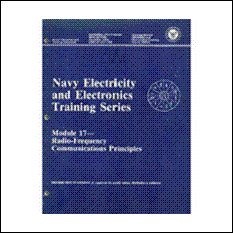Generators
Generators are machines that convert mechanical energy into electrical energy by using the principle of magnetic induction.
This principle is explained as follows: Whenever a conductor is moved within a magnetic field in such a way that the conductor cuts across magnetic lines of flux, voltage is generated in the conductor.
The AMOUNT of voltage generated depends on (1) the strength of the magnetic field, (2) the angle at which the conductor cuts the magnetic field, (3) the speed at which the conductor is moved, and (4) the length of the conductor within the magnetic field.
The POLARITY of the voltage depends on the direction of the magnetic lines of flux and the direction of movement of the conductor.
To determine the direction of current in a given situation, theLEFT-HAND RULE FOR "GENERATORS" is used. This rule is explained in the following manner.
Extend the thumb, forefinger, and middle finger of your left hand at right angles to one another, as shown in the illustration below. Point your thumb in the direction the conductor is being moved. Point your forefinger in the direction of magnetic flux (from north to south). Your middle finger will then point in the direction of current flow in an external circuit to which the voltage is applied.

The left hand rule for "generators".
THE ELEMENTARY-GENERATOR
The simplest elementary type of this device that can be built is the "ac" type. Basic generating principles are most easily explained through the use of the elementary "ac" type..
For this reason, the "ac" type will be discussed first. The "dc" type will be discussed later.
The elementary type device (shown in the illustration below), consists of a wire loop placed so that it can be rotated in astationary magnetic field. This will produce an induced emf in the loop. Sliding contacts (brushes)connect the loop to an external circuit load in order to pick up or use the induced emf.

An elementary-generator.
The pole pieces (marked N and S) provide the magnetic field. The pole pieces are shaped and positioned as shown to concentrate the magnetic field as close as possible to the wire loop.
The loop of wire that rotates through the field is called the ARMATURE. The ends of the armature loop are connectedto rings called SLIP RINGS. They rotate with the armature.
The brushes, usually made of carbon, with wires attached to them, ride against the rings. The generated voltage appears across these brushes.
The armature loop is rotated in a clockwise direction. The initial or starting point is shown at position A. (This will beconsidered the zero-degree position.) At 0º the armature loop is perpendicular to the magnetic field.
The black and white conductors of the loop are moving parallel to the field. The instant the conductors are moving parallel to the magnetic field, they do not cut any lines of flux. Therefore, no emf is induced in the conductors, and the meter at position A indicates zero. This position is called the NEUTRAL PLANE.
As the armature loop rotates from position A (0º) to position B (90º), the conductors cut through more and more lines of flux, at a continually increasing angle. At 90º they are cutting through a maximum number of lines of flux and at maximum angle.
The result is that between 0º and 90º , the induced emf in theconductors builds up from zero to a maximum value. Observe that from 0º to 90º , the black conductor cuts DOWN through the field. At the same time the white conductor cuts UP through the field.
The induced emfs in the conductors are series-adding. This means the resultant voltage across the brushes (the terminal voltage) is the sum of the two induced voltages. The meter at position B reads maximum value.
As the armature loop continues rotating from 90º (position B) to 180º (position C), the conductors which were cutting through a maximum number of lines of flux at position B now cut through fewer lines. They are again moving parallel to the magnetic field at position C. They no longer cut through any lines of flux.
As the armature rotates from 90º to 180º , the induced voltage will decrease to zero in the same manner that it increased during the rotation from 0º to 90º . The meter again reads zero.
From 0º to 180º the conductors of the armature loop have been moving in the same direction through the magnetic field.Therefore, the polarity of the induced voltage has remained the same. This is shown by points A through C on the graph. As the loop rotates beyond 180º (position C), through 270º (position D), and back to the initial or starting point (position A), the direction of the cutting action of the conductors through themagnetic field reverses.
Now the black conductor cuts UP through the field while the white conductor cuts DOWN through the field. As a result, the polarity of the induced voltage reverses.
Following thesequence shown by graph points C, D, and back to A, the voltage will be in the direction opposite to that shown from points A, B, and C. The terminal voltage will be the same as it was from A to C except that the polarity is reversed (as shown by the meter deflection at position D).
The voltage output waveform for the complete revolution of the loop is shown on the graph in the illustration below.

Output voltage during one revolution.
The elementary dc-generator.
The effects of adding additional coils and poles to a commutator
Electromagnetic-poles.
Commutation
Armature reaction
Compensating windings and interpoles
Motor reaction
Different types of losses
The Practical dc-generator and the Gramme ring armature
Drum type armature
Field excitation
Classifications of generators















